- Call us: 01444 237070
- Contact Us
- Stores
- Sign In / Register
-
- Back
- Used Cameras
- Used Lenses
- Used Video
- Used Film Equipment
- Used Stock Alert
- Used Accessories
- Recently Added Used Equipment
- Used Clearance
- Faulty
- Park Picks
- Sell or Part Exchange
- Trade-In
- Blog
- New in
- Call us
- Contact us
- Stores
- Sign in
- Categories
- Tips & Inspiration
- Reviews
- News
- Events
- Features
- Buying Guides
- Competitions
Wildlife Photography the Best Sony Cameras and Lenses
Wildlife photography is extremely popular with photographers of all skill levels, many of whom enjoy finding creative opportunities to capture local wildlife images, both in the city and closer to nature. Photographing the perfect moment takes patience, but it also needs the right digital camera and lens to have the best chance of nailing the shot.
Sony is a professional photography pioneer. The brand excels in everything a camera and lens required for wildlife photography – blistering and accurate autofocus, rapid burst shooting, sharp telephoto lenses and portable equipment are all strengths of the Sony E-Mount.
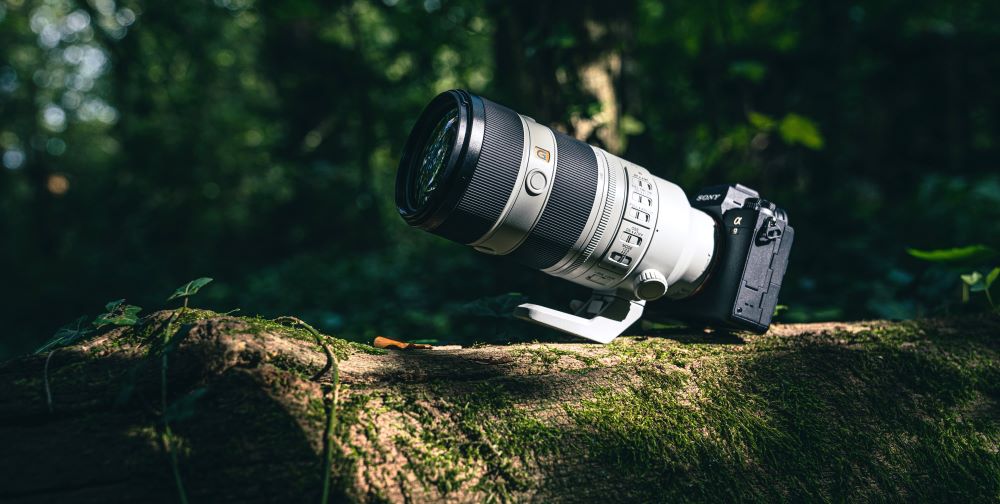
There are countless tools for both the beginner and the advanced photographer among Sony’s wide range of E-Mount cameras and lenses. Whether you’re just starting out photographing the living world or wildlife photography is already second nature for you, today we’ll be taking a closer look at the best Sony cameras and lenses for wildlife photography, so why not get to grips with this outstanding system?
What makes a camera good for wildlife photography?
Applicable to almost all cameras, image quality is vital for good wildlife photography. While your lens can do its part, the image sensor and camera body have a huge role in determining your image's sharpness. A higher megapixel count will give your focal points more detail, something that’s essential for wildlife photography as you’re always trying to capture the colour, detail, and character of your subject.
Autofocus is incredibly valuable to wildlife photographers. While other disciplines allow you to be slow and considerate with your choice of focus, wildlife photography doesn’t offer you that liberty. You’ll need a snappy system that keeps your subject in sharp focus, regardless of its motion. Modern processors and artificial intelligence systems have made autofocus absurdly fast, so wildlife photographers have a lot of power at their hands!
Other specs like maximum shutter speed and continuous shooting cater to the speed of the genre. Shooting fast-moving subjects like birds requires a camera with powerful processing.
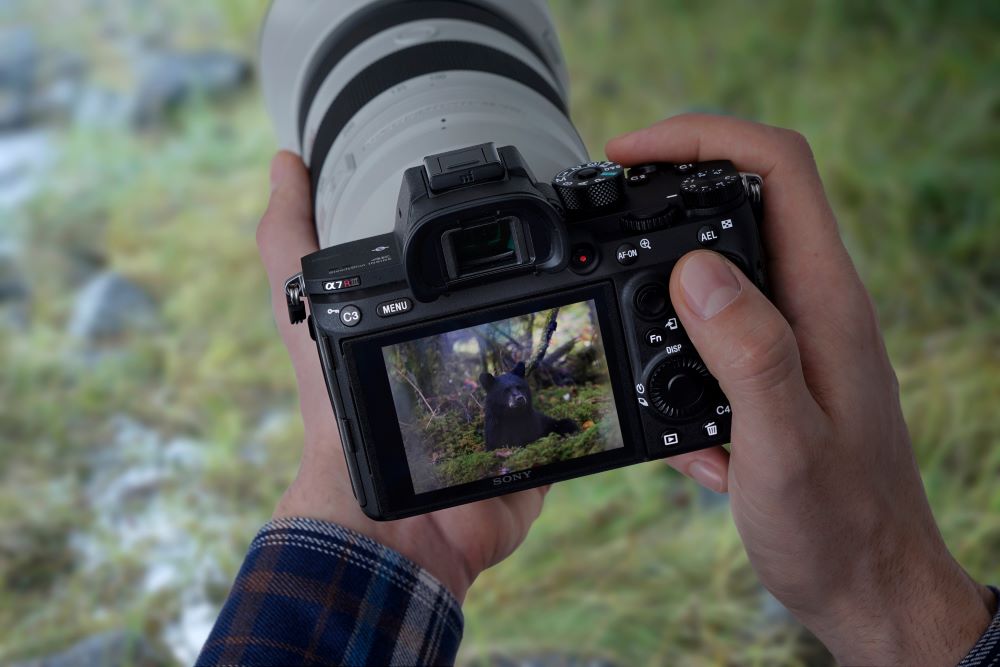
Best Sony cameras for wildlife
Sony has been instrumental in shaping the mirrorless camera market. We’re now more than a decade into the reign of Sony full-frame mirrorless, and in that time, its range has become a favourite of wildlife photographers across the globe.
Many wildlife photographers embrace Sony mirrorless cameras due to their advanced Bird and Animal AF, which helps to capture sharp images of their subjects. Sony has several brilliant lens options on top of this, including the FE 200-600mm F/5.6-6.3 G OSS lens, which is arguably the most accessible Sony lens for wildlife photography.
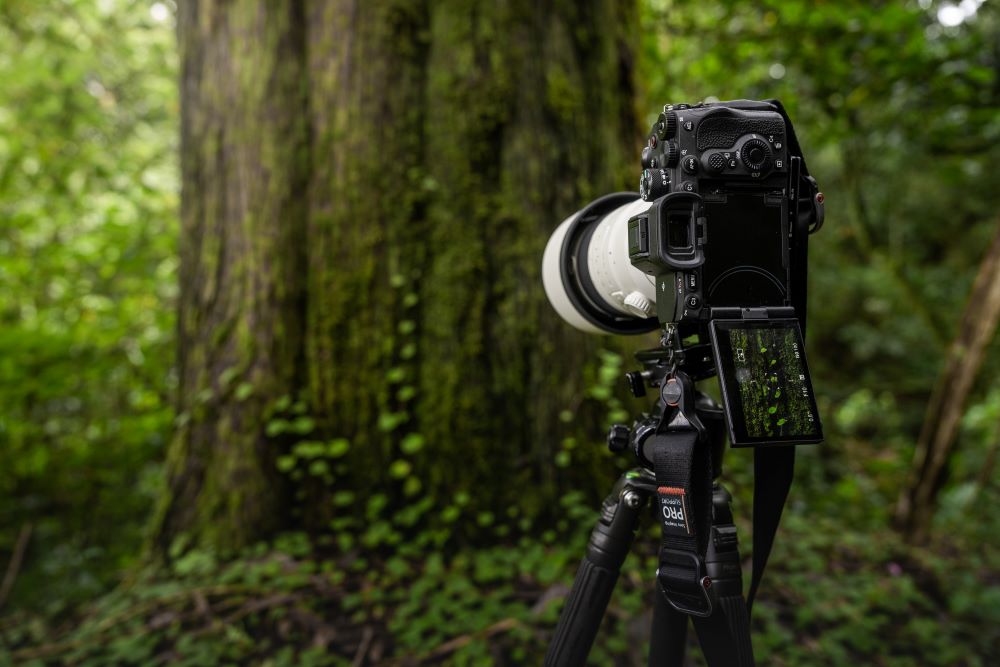
As Sony has such an established ecosystem, building upon many generations of unique cameras, we’ve listed below a choice of Sony’s current flagships which we believe are the best sony cameras for wildlife photography. Feel free, however, to explore their entire range, as almost all new and used Sony cameras will work brilliantly.
- Sony A9 III: the most recent full-frame Sony digital camera on this list, the A9 III pushes boundaries in a way that’s never been seen before with its unmatched speed. With the world’s first full-frame global shutter, image distortion is a thing of the past - even the fastest-moving subjects can be frozen in your shot. A maximum 1/80,000s shutter speed, real-time subject recognition and 120fps blackout shooting means there’s no creature in the sky, sea or land that the A9 III can’t keep up with.
- Sony A7R V: this camera follows in the footsteps of its predecessor, the brilliant Sony A7R IV, with the same massive 61MP full-frame sensor. However, this camera is a cut above in processing power. An all-new advanced subject detection system is perfect for wildlife photographers, and its IBIS rating of eight stops is a significant improvement. Where you want to combine outrageously high quality with fast performance, the A7R V is the ultimate choice.
- Sony A1: slightly more expensive than the A7R V, this camera’s stacked sensor gives much faster readouts, making continuous shooting incredible despite its massive 50MP of resolution. This choice is the way to go if you need high performance from every aspect of the camera. The autofocus, too, is just as good as you’d expect from a Sony camera by now!
- Sony A6700: arguably the best APS-C camera for wildlife photography, the A6700 appeals towards fans of this smaller sensor size. Using a cropped-sensor camera for the genre is an engaging prospect, as both APS-C cameras and lenses are characteristically smaller, meaning it’s perfect for shooting whilst out and about. With a 26MP sensor, a flawless AI-led autofocus system and elite Sony ergonomics, the A6700 is a brilliant entry-level choice that will perform all the way up to the professional level.
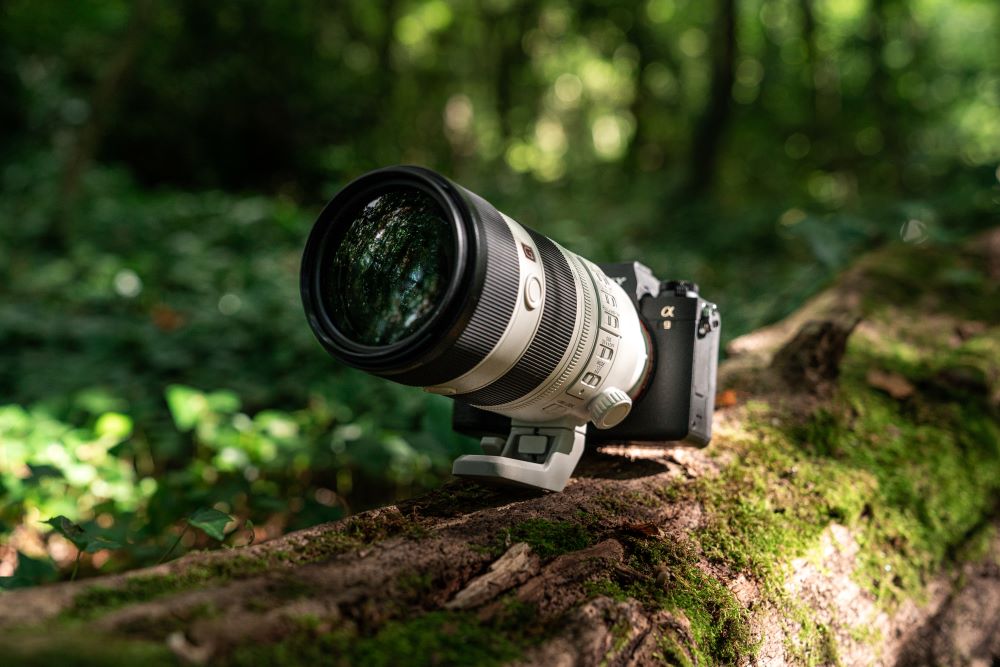
What makes a lens good for wildlife photography?
There are several factors to consider when choosing Sony lenses for wildlife photography. While there is no single best choice, there are several universal features which are consistently found in good lenses for wildlife photography.
On the whole, wildlife subjects are relatively far away from the photographer, particularly when photographing birds, deer and other shy creatures. For this reason, the best camera and lens for wildlife photography need to provide the greatest reach or longest focal lengths. Things to look for in a wildlife lens include:
- A long focal length, such as 100-400mm and 200-600mm for zoom lenses, and even 800mm prime lenses and longer.
- Optical stabilisation, as it helps to capture sharper shots at slower shutter speeds, which is particularly important during low-light photography.
- A wide aperture, which gathers more light and is crucial in getting the correct exposure in low light. Our Sony FE 70-200mm F2.8 GM OSS Mark II Lens review highlights how the shorter focal range of this zoom can still be utilised for wildlife photography, thanks to the bright aperture.
- Compact size and light weight are extremely desirable as they make it easier to shoot handheld, which helps you stay more agile to compose images quickly.
- Fast autofocus is a great feature for quick-moving wildlife subjects.
- Weather sealing is useful when shooting during inclement conditions.
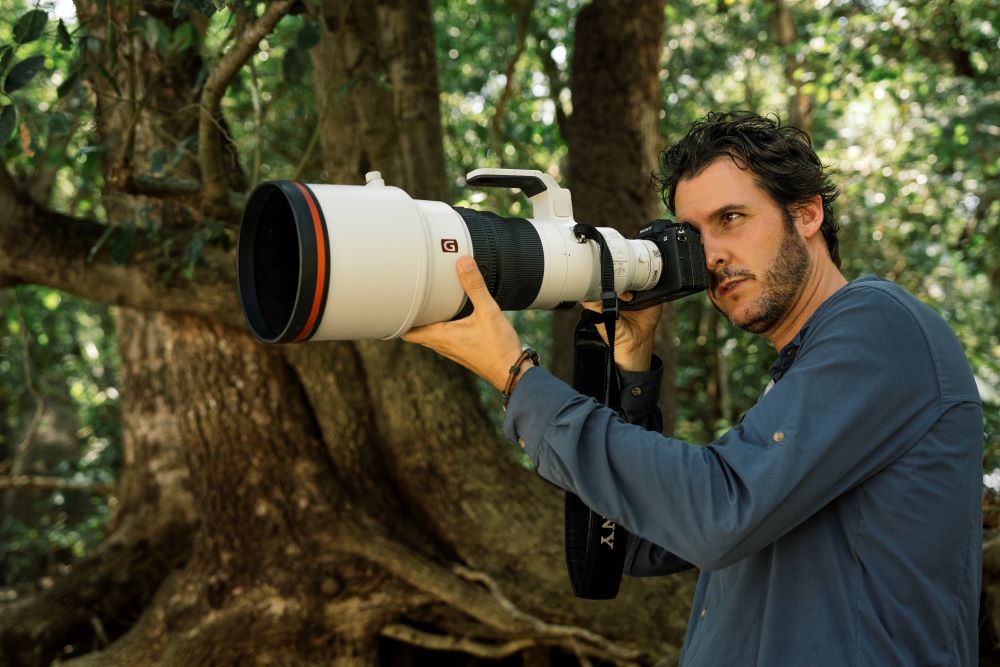
Best intermediate Sony wildlife lenses
New wildlife photographers are often intimidated by the investment required to get into the craft. Not only do they need a camera with cutting-edge autofocus performance, but they often need to invest in multiple rather expensive lenses. However, Sony offers plenty of options that enable budding photographers to dive into this genre and take it even further.
Zoom lenses are perhaps the best way for beginners to get started, as they enable intuitive composition and framing. For instance, the Sony FE 70-300mm f/4.5-5.6 G OSS is a brilliant option for intermediate photographers looking to try out wildlife photography. Its optical performance is excellent across the board, and its range is flexible whilst remaining exceptionally light.
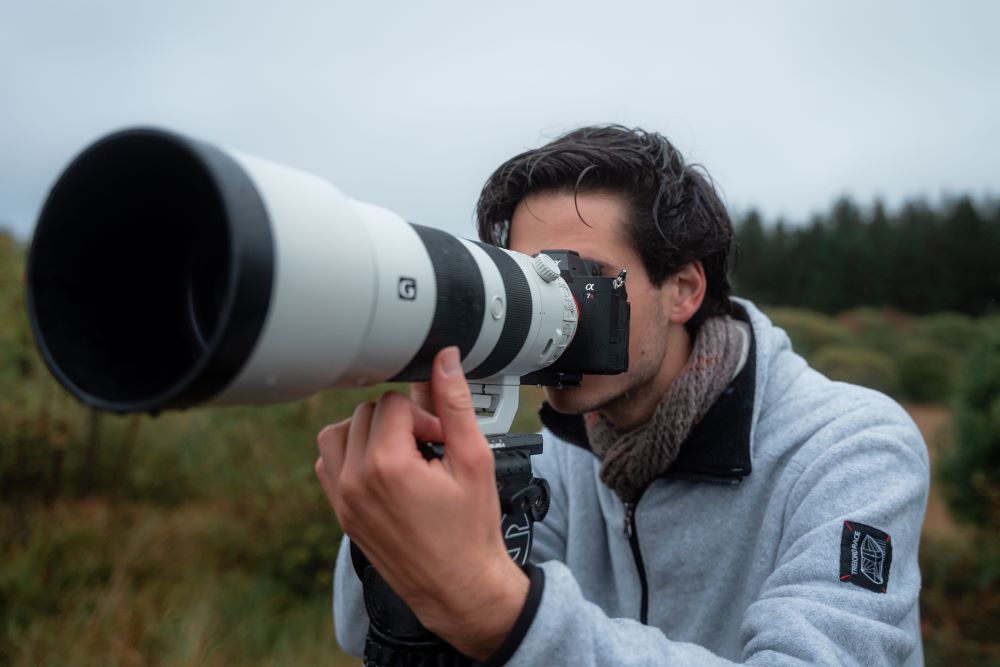
For even more range, the Sony FE 200-600mm f/4.5-5.6 G OSS is a flexible and resilient lens, with a reach favourable to the likes of bird photographers. As a G lens, it guarantees you optical excellence at a reasonable price point.
APS-C camera users will relish the Sony E 70-350mm f/4.5-6.3 G OSS telephoto zoom lens, which provides photographers with a 5x reach (equivalent to 105-525mm on full frame). At only 625 grams and an attractive price, achieving telephoto reach has never been easier.
At the cost of some resolution, this lens can even be used on full-frame Sony cameras as a budget alternative. If your budget is vital, the Sony E 55-210mm f/4.5-6.3 OSS zoom lens is available for only £229 and provides almost a 4x zoom.

Best Sony zoom lens for wildlife
Sony’s most advanced innovative lenses all belong to the beloved range of Sony G Master lenses. Every iteration strikes the perfect balance between sharpness and beautiful, smooth bokeh, pairing perfectly with Sony’s perpetually improving full-frame cameras.
Image quality isn’t the only thing about G Master Sony full-frame lenses that keeps wildlife photographers hooked – each lens keeps up with Sony’s notoriously fast autofocus system quickly and precisely, and is engineered for compactness and portability.
For maximum zoom range and reach, the Sony FE 100-400mm f/4.5-5.6 GM is the perfect lens for Sony Alpha. As the first G Master super-telephoto zoom, it’s ideal for shooting virtually all wildlife subjects with an incredibly versatile focal length. Weighing only 1359g, there’s no better compromise between portability and power. You can discover more about this lens and how it operates for wildlife and other subjects, in our in-depth Sony 100-400mm F4.5-5.6 GM OSS Review.

Towards the wider end of the G Master lens spectrum is the Sony FE 70-200mm f/2.8 GM OSS II. This next-generation lens has an unbeatable maximum aperture, providing both low-light performance and exquisite bokeh. Whilst being nearly half a kilogram lighter than the less expensive previous generation, it outperforms it with improved close-focusing and significantly faster, quieter autofocus response.
This exact focal length also has two G Lens equivalents, the Sony FE 70-200mm F/4 G OSS Mark II and Mark I, which offer similar Sony image quality and autofocus performance; yet they sacrifice a single f-stop of max aperture. However, this results in two options which are notably lighter and less expensive, making them a brilliant choice for those who want advanced performance at a cost-effective price.

Sony prime telephoto wildlife lenses
Prime lenses are generally lighter than equivalent zooms, with faster autofocusing (AF) and slightly sharper results, although many newer zoom lenses defy these benefits. However, their faster apertures, gorgeous bokeh results and relative portability make them favourites among skilled wildlife photographers.
The most powerful set of Sony E-Mount lenses for wildlife photography contains three telephoto primes – the Sony FE 300mm f/2.8 GM OSS, the Sony FE 400mm f/2.8 GM OSS, and the monstrous Sony FE 600mm f/4 GM OSS. These focal lengths ensure that no wildlife subject is ever too far away. Each lens' G Master seal of approval symbolises the best of what Sony offers with quality, speed and reliability.

The bokeh on all three lenses is unmistakably stunning, with fast maximum apertures that obliterate the background behind far-out subjects. With even the heaviest of the three (the 600mm f/4) weighing just over 3 kg, and optical image stabilisation included in each, these mighty lenses fit comfortably into the hands of a seasoned wildlife photographer.
Sony macro lenses for wildlife photography
Macro photography is a hugely popular discipline among wildlife photographers – it reveals a new perspective towards the outside world, and captures unseen, colourful details that almost always make for an intriguing image.
The E-Mount offers three prime Sony macro lenses that are perfect for shooting close-up wildlife subjects. Entering the lineup as the most advanced choice, the Sony FE 90mm f/2.8 G OSS lens provides beautiful G Lens bokeh, fast manual focus switching and true, 1:1 magnification.
The Sony FE 50mm Macro f/2.8 prime lens is designed brilliantly as well, with a 16cm minimum focus distance, and a weather-sealed compact design. For APS-C users, the Sony E 30mm Macro f/3.5 is an incredibly Sony macro lens compact, producing similar high resolution, colourful close-ups.
Third party E-Mount lenses
While Sony E lenses are perfect for wildlife photographers, the E-Mount hosts the most expansive range of third-party lenses out of all the full-frame mirrorless brands. This provides Sony users with even more flexibility regarding focal lengths, and often cheaper alternatives too.
Sigma is arguably the most popular third-party lens manufacturer and has honoured its commitment to Sony cameras by releasing a range of outstanding telephoto Sigma E Mount lenses. Their first super-telephoto lens for the E-Mount, the Sigma 500mm f/5.6 DG DN OS Sports lens, offers an excellent five stops of image stabilisation, is handhold-able and provides photographers with ridiculous reach at a comfortable price.
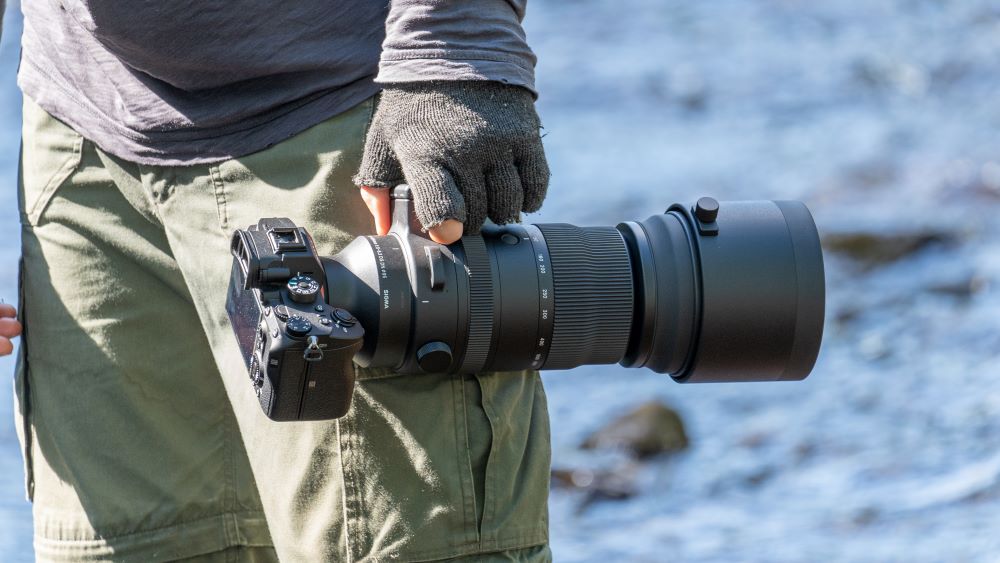
Sigma telephoto zoom lenses are just as popular. Faster Sigma lenses for Sony like the Sigma 70-200mm F/2.8 DG DN OS Sports Lens exist alongside options like the Sigma 60-600mm F/4.5-6.3 DG DN OS and the Sigma 150-600mm F/5-6.3 DG DN OS, both of which give photographers absurd amounts of range.
Tamron, another prevalent third-party manufacturer, also has invested several lenses towards the E-Mount. All-in-one lenses like the Tamron 18-300mm F/3.5-6.3 Di III-A VC VXD and the Tamron 50-400mm F/4.5-6.3 Di III VC VXD provide a great entry point into wildlife photography whilst not excluding other genres. More traditional lenses like the Tamron 150-500mm F/5-6.7 Di III VC VXD give beginners incredible reach without requiring them to break the bank.
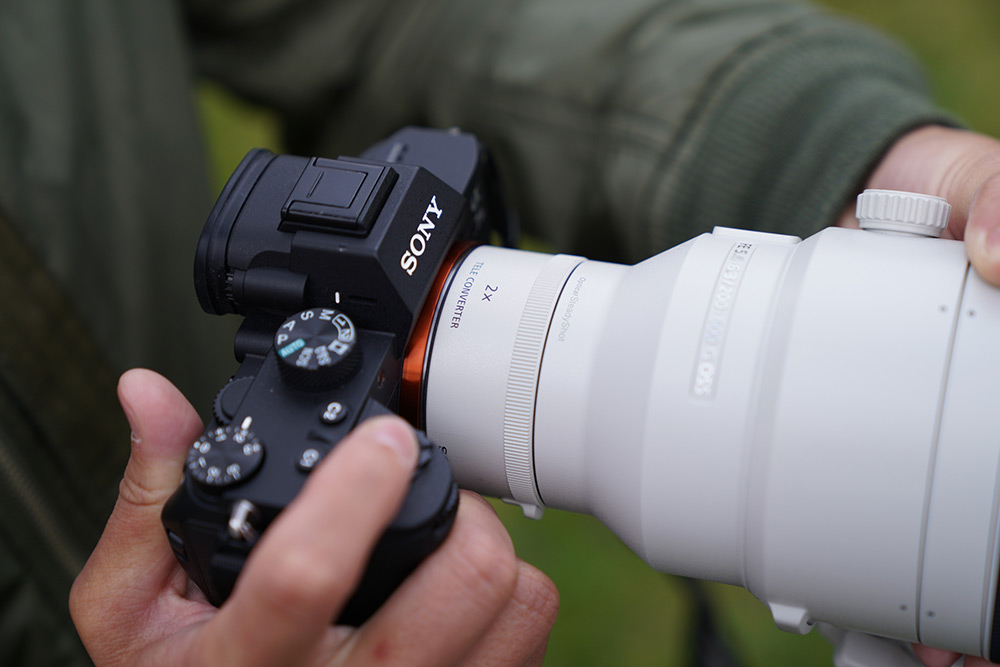
Sony E-Mount Teleconverters
While Sony’s range of wildlife lenses all have powerful reach, sometimes photographers need to get even more range out of their equipment. In addition, Sony wildlife shooters will be looking for versatility and portability in their selection of lenses, so will want to cover as much focal lengths with as few lenses as possible.
This is where Sony teleconverters come in. A must-have in any wildlife photographers camera bag, these multiply the focal length of your lens to achieve far more reach. The best teleconverters are lightweight and compact, and don’t hinder the camera and lens’ performance.
Sony offers the Sony FE 1.4x Teleconverter and a Sony FE 2x Teleconverter. Both choices retain full operability and optical quality at the cost of two stops of light – these are compatible with all full-frame Sony wildlife lenses. If you want your wildlife equipment to match each and every one of your needs, a teleconverter is the perfect addition to your kit.
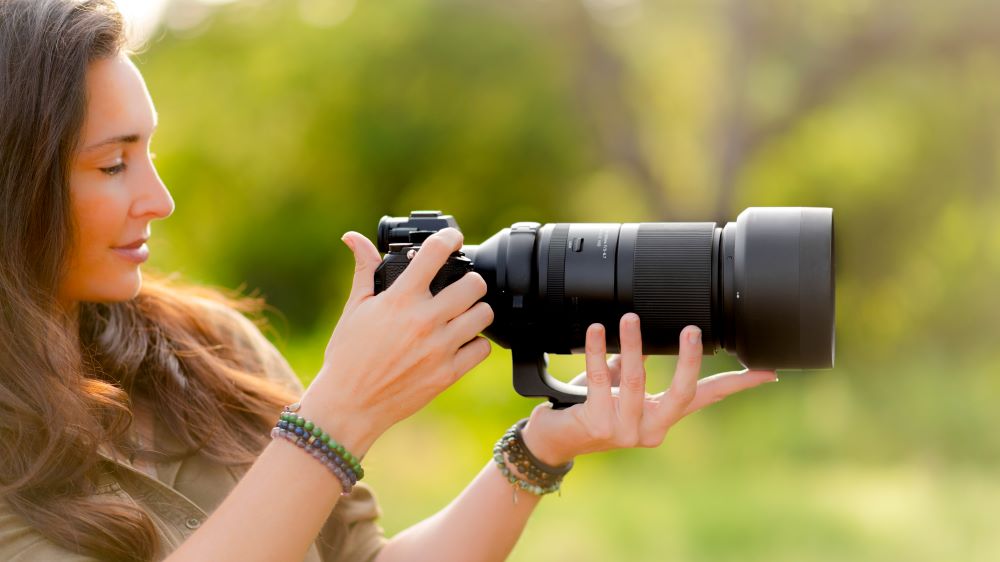
Park Cameras is an official Sony UK retailer, so we're dedicated to helping you get the most out of your Sony mirrorless system. Shop our range of new and used Sony E-Mount lenses, cameras, accessories and more today - you’ll find the perfect tool for your wildlife photography adventures.
Share this post:
By Park Cameras on 08/05/2024

Trade in your old equipment
Fast and easy trade in service ensures your old gear is collected efficiently and you are paid quickly! It's very simple to trade in your unwanted photography gear. Just head over to our dedicated Sell or Part Exchange page, fill out the details, and we'll get back to you with an offer for your old gear. Take the cash, or put it towards the cost of your new gear. It's up to you! Find out more
sign up to the newsletter
Keep up to date on the latest photography news, events and offers. Sign up now
